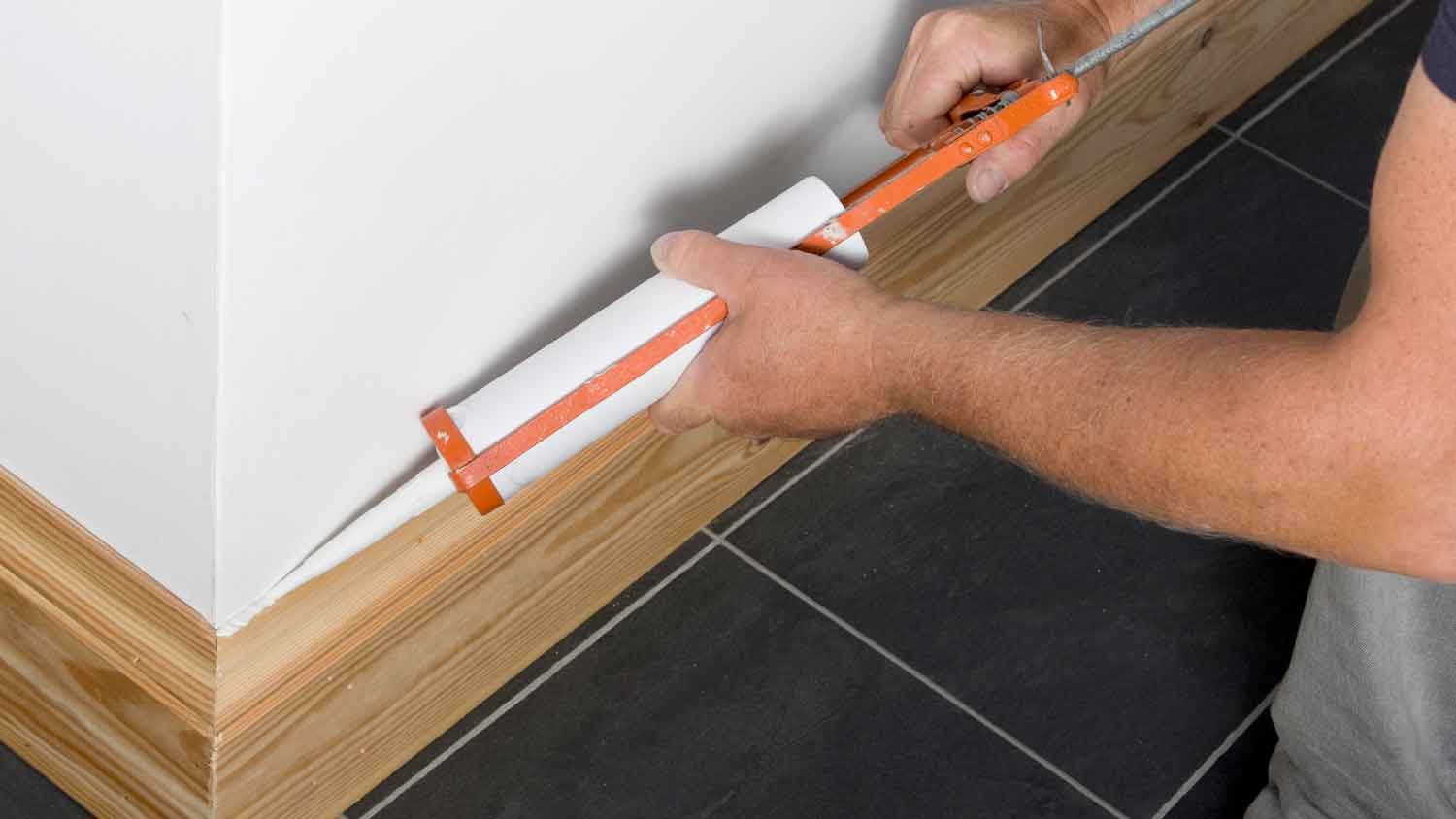What Is Caulk? Discover the Definition, Types, Uses, and Alternatives
Fill gaps, seal cracks, and prevent mold with this multi-purpose material


Caulk is a flexible sealant that fills gaps between different surfaces or materials.
It’s often used on bathtubs, sinks, toilets, and tiled surfaces.
Once applied, caulk prevents air or water from damaging the surrounding materials.
There are multiple types of caulk, including silicone and acrylic latex.
Caulk is similar to sealant, but it’s less elastic and better for stationary surfaces.
If you’re planning a bathroom remodel or kitchen renovation, you’re probably going to go through a few tubes of caulk in the process—but what is caulk, exactly? And how is it different from other materials, like sealant and grout? Let’s look at the basics behind this common building material, including what it is, how much it costs, and where to use it.
What Is Caulk?

Caulk is a flexible substance used to fill gaps or create bonds between different surfaces or building materials on the interior or exterior of your home. It’s commonly applied to windows, doors, and plumbing fixtures (such as bathtubs and sinks) to prevent air leaks and water damage.
It most often comes in a tube that you insert into a caulking gun when you’re ready to apply it. There are also squeezable and pressurized tubes of caulk, which don’t always require a caulking gun.
Types of Caulk
There are several types of caulk, including:
Acrylic latex caulk
Silicone caulk
Polyurethane-based caulk
Butyl rubber caulk
Each type of caulk is different, and it’s important to choose the right kind based on the project you’re tackling. For example, the best caulk for showers isn’t necessarily going to be the best caulk for baseboards. If you aren’t sure which type you need, reach out to a local caulking company for advice on your specific project.
Where to Use Caulk Around Your Home

Caulk is a versatile product that’s effective for indoor and outdoor projects. Some of the most common uses of caulk include:
Sealing drafty windows or doors
Preventing mold growth in showers and tubs
Closing gaps around baseboards or moldings
Patching small holes or cracks in interior walls
Reapplying loose carpet or wallpaper
Repairing roof shingles or flashing
Filling gaps on the exterior of your home to prevent pests from entering
How Much Does Caulk Cost?
If you hire a pro, the cost of caulk will depend on the size of the area they’re caulking and whether they need to remove old caulk. On average, though, professional caulking costs between $65 and $300 for a bathtub or shower or $50 to $70 per window.
Alternatively, you can save money by learning how to apply caulk yourself. Overall, it’s fairly straightforward (although it’ll take some practice to master the motions), but some caulking projects are more complicated or dangerous than others.
For example, caulking a shower is a DIY-friendly task, but climbing onto your roof to replace loose shingles isn’t quite so simple. For these sorts of specialized or high-risk projects, we recommend calling a handyperson or caulking pro.
Caulk vs. Similar Materials
If you don’t have much DIY experience, it’s easy to confuse caulk with other materials, like sealant and grout. However, each of these products serves a different purpose, so it’s important to understand which one you’ll need for your job. Here are some of the primary differences between caulk and similar materials.
Caulk vs. Sealant
Caulk and sealant have similar uses and application methods, which explains why the terms are often used interchangeably. However, sealant is more elastic and less rigid than caulk. As a result, sealant is a better option for spaces that experience lots of movement.
Caulk vs. Grout
Grout is a cement-based material that goes between tiles to prevent them from shifting. When it comes to grout versus caulk, grout is harder than caulk when it dries, making it the better pick for keeping tile floors, walls, and backsplashes in place. On the other hand, caulk is useful for sealing gaps between different materials (for example, a tile wall and countertop).
Frequently Asked Questions
While it has many benefits, caulk also has several disadvantages. Caulk can shrink and crack over time, making it less effective at preventing drafts and leaks. Also, if you’ve never applied caulk before, you might find it tricky to use a caulking gun at first, and you could end up with a sticky mess on your hands.
Before you begin caulking a shower, you’ll need to use a utility knife or solvent to remove the old caulk and inspect the area for mold. If needed, take appropriate steps to get rid of the mold, then wipe everything down with dish soap and warm water before letting it dry completely. Finally, surround the caulking area with two strips of blue painter’s tape—one above the joint where you’re caulking and another below it.





- How to Caulk: The Ultimate Step-by-Step Guide to Applying Caulk Like a Pro
- 10 Caulking Tips to Seal Gaps Like a Pro
- Grout vs. Caulk: Which Is Best for Your Project?
- How to Use a Caulk Gun to Apply Caulk Like a Pro
- 5 Common Types of Caulk: Which One Is Best for Your Next Project?
- Ranking the Best Caulk for Windows and Finding the Perfect Seal
- Acrylic vs. Silicone Caulk: Which Is Best for Your Project?
- Should You Caulk Before or After Painting the Exterior of Your Home?
- Caulk vs. Spackle: Understanding the Differences for Your DIY Projects
- How to Seal Windows for Winter: A Complete Guide










